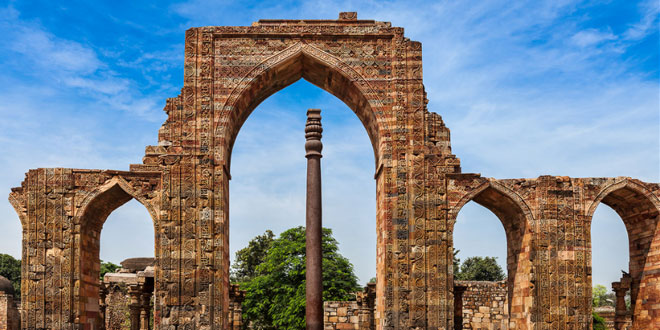Question: Write a note on the progress made in the field of medicine during the ancient period.
Answer: Science was advanced in ancient India. Knowledge of medicine improved, largely due to the efforts of Charka and Sushruta. Charaka wrote the Charaka Samhita. Sushruta was a specialist in cosmetic surgery. He performed thousands of operations, particularly the reconstruction of the nose. Dhanvantari was a general physician.
Question: What is special about the Iron Pillar?
Answer: The Iron Pillar at Mehrauli, in Delhi, is a proof of the skill of the indian craftsmen. It was constructed over 1,600 years ago, during the reign of the Guptas. The Pillar is made of iron. It is 7.2 metres high and weighs around 6.5 tonnes. it is known as the ‘rustless wonder’ because despite being exposed to the sun and rain for all these centuries, it has not rusted.
Question: Why is secular literature an important source of history?
Answer: The Arthashastra, Indika, Harshacharitra, stories from the Jatakas and the Panchatantra, the works of Kalidasa and the accounts of foreign travellers are the important secular works of this period. The Arthashastra and the Indika were written by Kautilya and Megasthenes respectively. The Arthashastra describe the political system of the time and the art of governance. It gives information in the Mauryas. Similarly, the Indika tells us about the politicals, social and economic conditions during the Mauryan Dynasty. Megasthenes has also described the city of Pataliputra. Harshacharita is another valuable literary source. It was written by Banabhatta and contains a description of the early life of King Harshavardhana.
Question: What was common in the structures of the temples constructed during this period?
Answer: Most of the temples constructed during this period had some common structures. These were the following.
- Garbhagriha – It was the room were the image of the chief deity was kept.
- Shikhara or Vimana – It was a tower on top of the garbhagriha to mark it out as a sacred place.
- Mandapa – It was an assembled and prayed.
Question: Write a note on painting in the Gupta period.
Answer: During the Gupta period, the walls of the cave monasteries at Ajanta were decorated with beautiful paintings. These paintings, called ‘murals’, depict events from the life of the Buddha. Colours made from natural materials were used in these paintings. That is why these paintings have retained their glow, even after so many centuries.
 Class Notes NCERT Solutions for CBSE Students
Class Notes NCERT Solutions for CBSE Students



